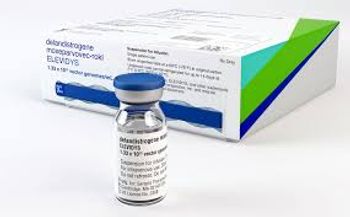
Insurance Coverage, Not Substitution Rules, Fueled Semglee’s Adoption
Key Takeaways
- Improved insurance coverage, not interchangeability status, likely drove Semglee's increased adoption over Lantus.
- Semglee's market share rose significantly in Medicaid and employer-sponsored insurance after interchangeability designation.
The findings in a new study published in Health Affairs suggest that Semglee’s interchangeability status may have partially increased adoption by supporting improved formulary coverage.
Improved insurance coverage likely drove increased adoption of Semglee (insulin glargine-yfgn) rather than its status as an interchangeable biosimilar of Lantus, according to new
Semglee was first approved in June 2020 as a biosimilar of Sanofi's Lantus (insulin glargine). Both are long-acting insulin analogs used to improve glycemic control in adults and children with diabetes. Marketed by Biocon Biologics, Semglee received interchangeability status in July 2021, meaning that there is no clinically meaningful difference between the biosimilar and the reference product. An interchangeable biosimilar can be substituted for the reference product at the pharmacy counter, depending on state laws. Biocon Biologics also offers a nonbranded version of insulin glargine-yfgn.
In the Health Affairs study, researchers from Cornell University and Harvard University analyzed prescription claims data from Medicaid and employer-sponsored insurance in 2021 and 2022. They used several data sources, including the Medicaid State Drug Utilization Data to review Medicaid claims and the Merative MarketScan Research Database to assess employer-sponsored claims. They also used MMIT Analytics Formulary Insights to obtain data on formulary coverage for health plans.
They tracked Semglee’s market share before and after its interchangeability designation compared with Lilly's Basaglar, which was approved by the FDA in 2015. Although Basaglar is an insulin glargine, it is considered a “follow-on” product and not a biosimilar of Lantus. Basaglar was approved through a different regulatory pathway that did not use Lantus as a reference drug, and it is not interchangeable with Lantus.
In their review, the researchers examined three potential mechanisms for biosimilar adoption: what they called a “prescribing channel,” where the FDA designation signals quality to doctors; a “substitution channel,” where pharmacists can swap biosimilars for originator prescriptions; and a “coverage channel,” where insurers improved biosimilar placement based on interchangeability.
The analysis included 16,331,724 Medicaid claims and 456,170 employer-sponsored insurance claims for Lantus, Basaglar, or Semglee between 2021 and 2022.
Researchers found that Semglee market share increased by 3.70 percentage points in Medicaid and 19.25 percentage points in employer-sponsored insurance beginning in the first quarter of 2022, after the interchangeability designation.
They suggested that the coverage channel was the primary driver of this increased market share. In employer-sponsored insurance, the share of covered lives for whom Semglee was covered increased from 41.2% to 82.1% between December 2021 and December 2022, while preferred coverage status jumped from 0.2% to 34.3%. Medicaid coverage, which is mandated by state laws, showed more modest improvements.
Researchers also looked at state-level variation in pharmacist substitution laws and found that this was not associated with Semglee adoption. The researchers examined four dimensions of state policy, including requirements for physician notification and patient consent, but found no meaningful correlation with adoption rates across states.
Pharmacist substitution likely played only a secondary role, researchers said in their paper, with the timing of Semglee’s market share increase most likely from increased formulary coverage after the interchangeability designation.
Lead author Pragya Kakani, Ph.D., assistant professor of population health sciences at Cornell University, and colleagues noted several factors may have influenced the results. Semglee list prices increased in late 2021 while competitor pricing remained stable, which may have led pharmacy benefit managers to offer more favorable formulary placement for higher rebates.
The study had limitations, including its focus on a single biosimilar and exclusion of Medicare Part D. The researchers also could not fully rule out other factors that might have affected biosimilar adoption beyond interchangeability status.
Newsletter
Get the latest industry news, event updates, and more from Managed healthcare Executive.

















































